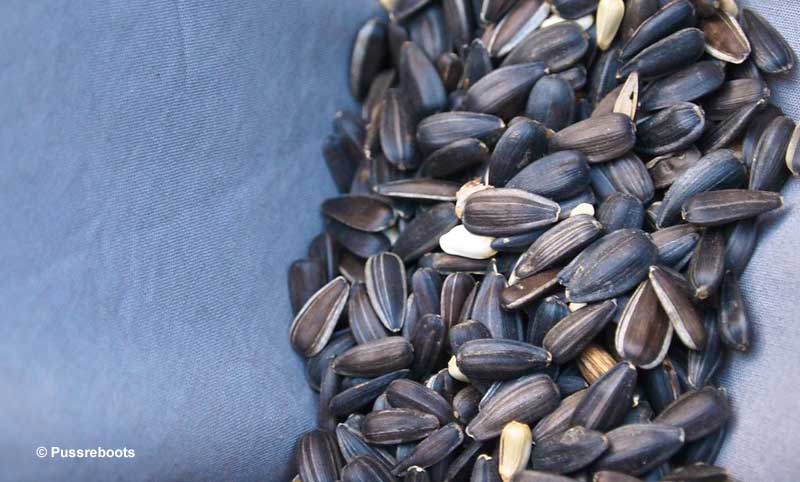
Bird seed is vital for birds, especially during the winter. With what looks like an endless array of different seeds, it can be difficult to make a choice.
Whether you’re an avid bird enthusiast seeking to attract different species or a casual observer looking to enhance your backyard ecosystem, this article is for you!
What Do Birds Generally Eat?
The diet of birds is ever so variable, so there isn’t a definite answer. Some birds are carnivores and eat only meat, while others eat fruit, and others eat insects.
What really makes or breaks them is the availability of food. In nature, you have to be strong.
This is why it’s important to have feeders around during wintertime and to offer a safe habitat during breeding season.
But as we concluded, birds eat more than just seeds and nuts. Their most important food sources include:
- Vegetation and grass
- Nectar
- Fruits and berries
- Sometimes even vegetables
- Insects and worms
- Snails and invertebrates
- Small mammals, such as mice and rabbits
- Reptiles
- Fish
- Other birds
- Carrion
- And of course, seeds and nuts
Read more – The Diets of Birds
Bird Seed Types
Sunflower seeds
Sunflower seeds are some of the most common and important bird feeder foods available. They have a distinctive slender shape where one end of the seed is pointed and come in two main varieties.
The striped sunflower seed is pale with black stripes, while the black-oil sunflower seeds are entirely black. Some species prefer black oil sunflower seeds for its higher nutritional value and oil content.
Northern Cardinals, finches, and many other birds love both types of sunflower seeds because they act as an excellent, energy-rich food source. They are also easier to open than some other seeds, especially the thin-shelled, black sunflower seed. The striped variety has a thicker shell that House Sparrows and grackles can have trouble opening.
Did you know: You can grow sunflowers at home, dry them, and then offer them to birds!
Sunflower seeds attract a wide variety of species, including:
- Cardinals
- Chickadees and titmice
- Nuthatches
- Purple and House Finch
- Grosbeaks
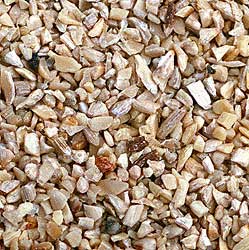
Sunflower chips
Sunflower chips might come from black oil or striped sunflower. Popular with the same species that like black oil sunflower.Some prefer to offer sunflower chips so there are no hulls to fall to the ground under feeders and no problems with seed germination.
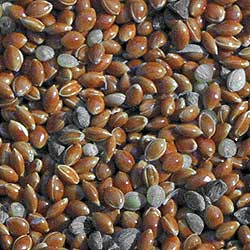 Millet or Red Millet
Millet or Red Millet
Found in many seed mixes. Best feed on the ground. Popular with:
- Sparrows
- Doves
- Towhees
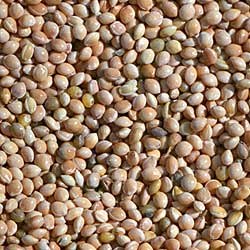 White Millet or White Proso Millet
White Millet or White Proso Millet
Found in mixes or sold separately. Popular with:
- Sparrows
- Doves
- Buntings
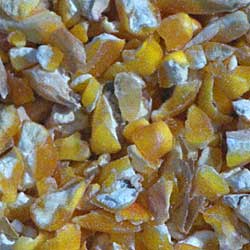 Cracked corn
Cracked corn
Found in mixes or sold separately. Popular with:
- Jays
- Doves
- Juncos
- Blackbirds
- Sparrows
- Towhees
Safflower seeds
Safflower seeds are white or pale seeds shaped somewhat like a sunflower seed. However, they are thicker, have a rounded rather than pointed end, and also look more like some type of grain than a seed.
These tough seeds are favored by cardinals, grosbeaks, Purple Finches, and other birds with strong, seed-cracking beaks. They are usually too tough for goldfinches, but cardinals love them!
Another benefit of using safflower seeds is that squirrels, House Sparrows, and European Starlings tend not to like them. That’s not always the case, but if you want to keep invasive bird species and squirrels away, safflower seeds are a good bet.
Thistle seed
Thistle seeds are small and slender seeds that can be dark brown or jet black.
Although it’s not native to North America, birds still love them and the imported seeds are treated to keep them from propagating. Various birds will eat them, but small finches are especially fond of this seed. Their small size and energy make them perfect for birds like goldfinches, Indigo Buntings, and Pine Siskins.
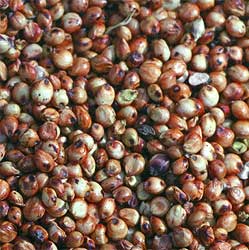 Milo or Red Milo
Milo or Red Milo
Often found in seed mixes. Best served on the ground. May attract:
-
-
- Doves
- Quail
- Jays
-
Milo are small, round seeds that grow in large bunches on the top of a Sorghum stalk. These small, rusty-brown seeds are an important food source for people in several parts of the world. They can also be beige or even golden-colored and act as excellent bird feed.
Milo is found in seed blends too,
Although various types of birds will feed on Milo, it might work best at feeders in western North America. Spread it on or near the ground and Milo can attract Gambel’s Quail, thrashers, jays, and other birds happy to eat this abundant, energy-rich food.
However, be aware that cowbirds and some other possibly unwanted birds also love it.
Shelled peanuts
Shelled peanuts are simply peanuts that have had their shells removed. Peanuts with shells will also work for various birds, but shelled ones attract lots more. Shelled peanuts can be offered whole or as bits of nuts.
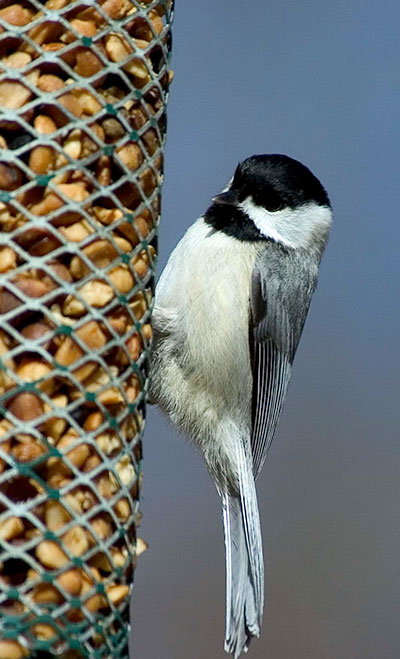
Either way, lots of birds like to eat them. As with other nuts and seeds, birds get valuable energy from eating peanuts, especially during harsh, cold weather.
Some of the birds that like peanuts the most are jays, crows, chickadees, and titmice. Woodpeckers and other birds will also take advantage of shelled peanuts, but they are also an excellent way to attract squirrels, raccoons, and other animals.
 Peanuts
Peanuts
Found in mixes. Sold separately as chips and halves or whole peanuts. Popular with:
- Jays
- Nuthatches
- Titmice
- Chickadees
- Woodpeckers
- Cardinals
Acorns
Acorns have long been an important food source for many birds and other animals. These rounded nuts are easy to recognize, especially when they are topped with their small woody cap.
Although you wouldn’t think so at first, acorns are the most easily accessible seeds for wild birds during fall.
Birds and other animals love acorns because they act as an easy, energy-rich source of food. Even better, they are one of the few foods that animals can also store or “cache” for later use.
Acorn Woodpeckers and jay species hide acorns in this manner and of course love feeders that have them. Band-tailed Pigeons and some other birds that don’t visit feeders (such as Wood Ducks) will also eat acorns.
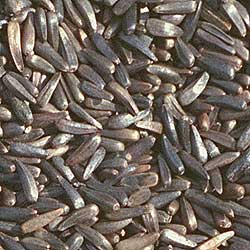 Nyjer®
Nyjer®
Nyjer is a small, imported seed popular with goldfinches and siskins. Sometimes called thistle, it is not the same as the common thistle plant found in the United States. Nyjer® is a trade marked name of the Wild Bird Feeding Industry.
Walnuts
Walnuts are popular ingredients in muffins and cakes, but birds like them too! Although some birds can break into the shells of these pale brown, rounded nuts, before offering them to birds, they should be shelled.
After removing the shell, walnuts are usually broken into small pieces and mixed with bits of peanuts and seeds. Birds love to eat walnuts because these fatty nuts are a fantastic source of energy.
Many species will eat them, including chickadees, Blue Jays and other jay species, woodpeckers, pigeons, and other species. Just keep in mind that squirrels also love walnuts, shelled or not.
Rapeseed
Rapeseed is a small black, rounded grain that comes from a “weedy” plant with bright yellow flowers. This plant is cultivated for the oil pressed from its seeds. It is also frequently included in birdseed mixes and is sometimes sold on its own.
Related: 8 reasons why birds aren’t coming to your feeders
Some birds like to eat it, especially ground-feeding species like juncos, quail, Mourning Doves, and finches. These species can probably tolerate the oils in the seed and use it as a valuable source of energy.
However, since cowbirds and House Sparrows also love Rapeseed, it might not be the best choice of seed for a feeder.
What To Keep In Mind
If you want to attract more backyard birds to your garden, keep these pointers in mind:
- Create a welcome habitat: In order to feel comfortable in your garden, birds need some shelter. This is your chance to use creative landscaping. Essential elements ideally include shrubs, different plants, and maybe even a birdbath or two!
- Keep multiple feeders available: Depending on where you live, keep different feeders around. Hummingbirds really love nectar, but they are also addicted to sugar water. In addition, woodpeckers love suet cakes, some birds like seed cakes, while bluebirds feed on mealworms.
- Don’t go too overboard: Store-brought feeders are a great option, but you don’t necessarily need specialized feeders. It’s even possible to make your own DIY feeders.
- Clean environment: Birds are more likely to come if they see the feeders clearly. Besides, the more clutter, the more places there are for predators to hide.
- Keep your feeders clean: We wouldn’t want to eat moldy food, would we? The same goes for our little friends.
- Store some extra bird food: When it gets colder, birds can really do a number on their food. Make sure to have some extras around”
- And finally, enjoy the birds!
Read next: Bird feeder types to fit your needs



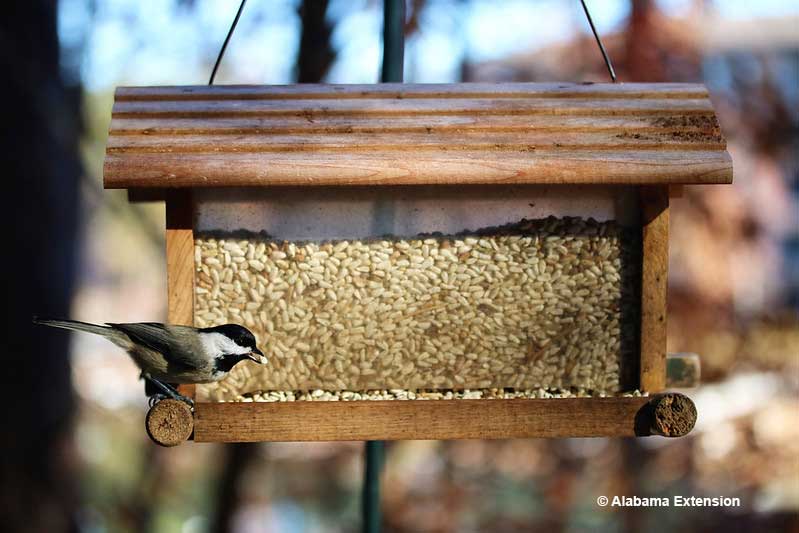
L G Bey
Monday 26th of February 2024
This is good info thank you. I appreciate it.
Renee
Sunday 25th of February 2024
I think I'm doing well feeding my backyard birds. My name is Renee but I call myself Wren!
I have a few pics I want to share, one an albino blue jay. The other a painted bunting. Both photos taken in my yard, Brooksville FL.
Thanx for writing. I'd hate for anyone to buy feeders and seed for the wrong birds in their area. To us, birds are such a joy!
Patrick O'Donnell
Wednesday 28th of February 2024
@Wren- Glad to hear that! Yes, it's important to know which foods attract which birds. They bring joy to our lives too.